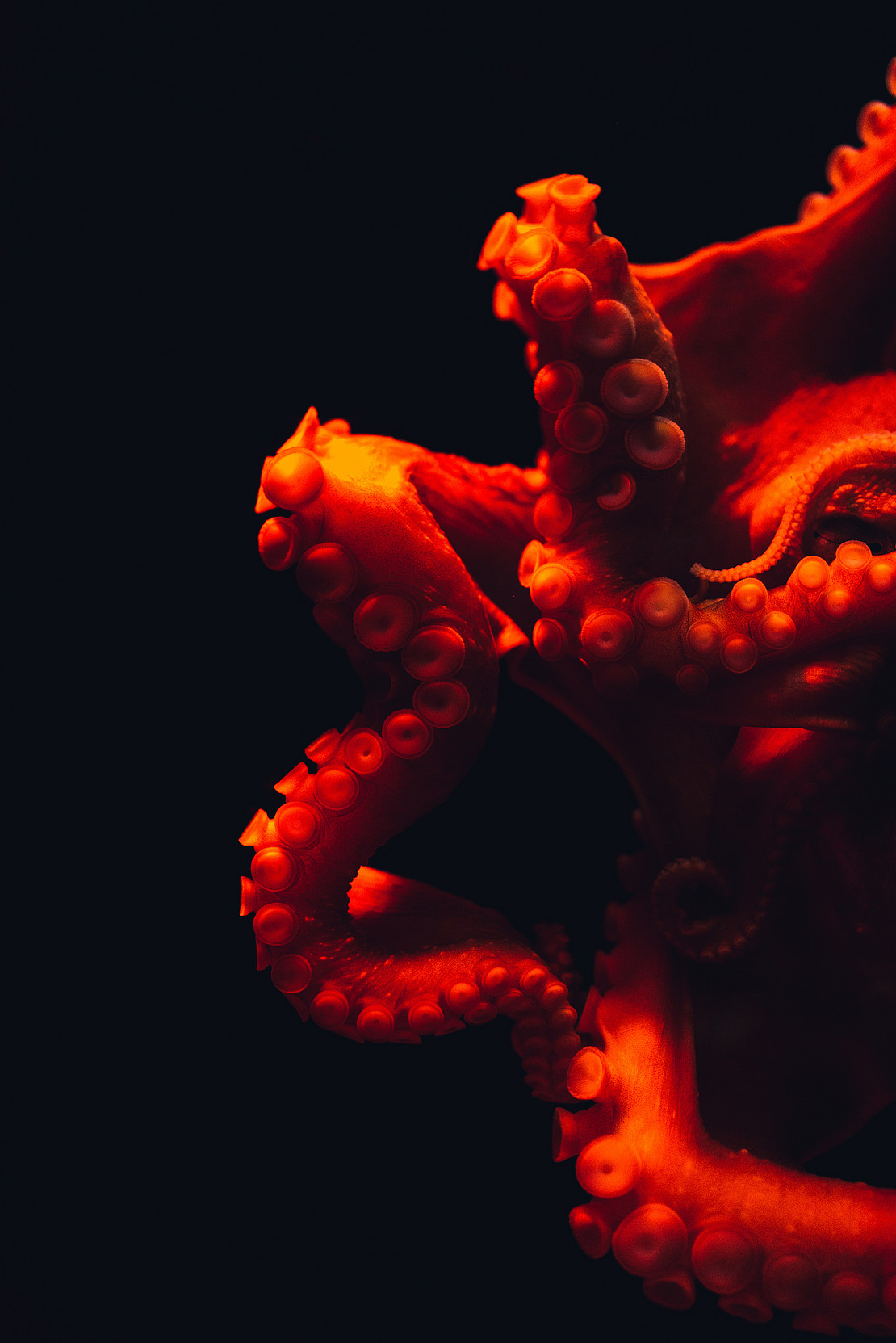This page contains automatically translated content.
The alien from the ocean
 Image: Masaaki Komori
Image: Masaaki KomoriWithin seconds he can transform his appearance by changing color and changing his physical form. His soft body squeezes through tiny holes, only his sharp beak and eyeballs are solid. Three hearts pump blue blood. Each of its eight arms is crisscrossed with nerves and ganglia that move independently of the brain. Considered very intelligent, capable of learning and solving problems, the octopus has a truly special body. Like an alien, it is both alien and fascinating to us humans. But what does he feel? Does it even have a consciousness?
How do you think an octopus feels?
"It's hard for us as humans to put ourselves in the shoes of an animal like an octopus," says Dr. André Krebber, a research associate at the Department of the History of Human-Animal Relationships. The environmental scientist is particularly interested in the relationship between humans and animals and its significance for society. "The octopus tends to be seen as a monster or food in our society," Krebber says. With dogs or cats, which have been with us for millennia, it's different, he says - these animals are very close to us emotionally and socially.
"The octopus is a kind of enigma for me. Many questions can be asked of it, above all: How can we look at animals differently? And from a completely different perspective and not based on our human abilities," Krebber asks. He wants people to question the way they treat the environment and other living creatures. That was precisely his motivation for embarking on the project "Okto-Lab: Laboratory for Octopus Aesthetics" with his colleague and artist, Dr. Yvette Watt, from the University of Tasmania.
Art as an approach to knowledge
Instead of using a moral club, Krebber and Watt want to get people thinking through art in their "Okto-Lab" exhibition. Okto-Lab focuses on aesthetics as sensory perception: for example, visitors can feel their way into the body of an octopus via virtual reality glasses. Another project takes visitors narratively to different stations in an aquarium until they meet the octopus. They experience the world a bit through its eyes.
In the process, controversial questions are raised: Do animals have consciousness? Should they be given personal rights? What are humans doing to them by interfering with their habitat?
"Art serves as an experimental approach to knowledge production, which precisely does not and does not have to adhere to scientific guidelines," Krebber explains. Krebber was already present at the Campusfest in June with octopus stuffed animals and a table with holes. Visitors could squeeze the flexible stuffed animals through the small openings.
Still, science is not irrelevant alongside art at Okto-Lab. Among others, the exhibition is also accompanied by biologists, evolutionary biologists and scientists of Human-Animal Studies through a scientific conference. The artists also work closely with scientists and scientific literature. In this process, art is sometimes more critical and sometimes more complementary to science.
The Okto-Lab
The Okto-Lab was created as part of a federation line for Australian and German project collaboration. The first exhibition of the Okto-Lab will take place on December 13 in Hobart, Tasmania. It will be followed by an exhibition in Cologne, Germany, in May 2020. Okto-Lab is explicitly not aimed at scientific audiences. While questions about scientific research are posed, the focus is on art. Particularly important for the exhibition: neither live nor dead animals will be shown there. "The point is to take animals seriously as subjects," Krebber explains. The goal is to make the environmental experience out of the animal and to unbalance human viewpoints.
Text: Christine Graß, publik 4/2019